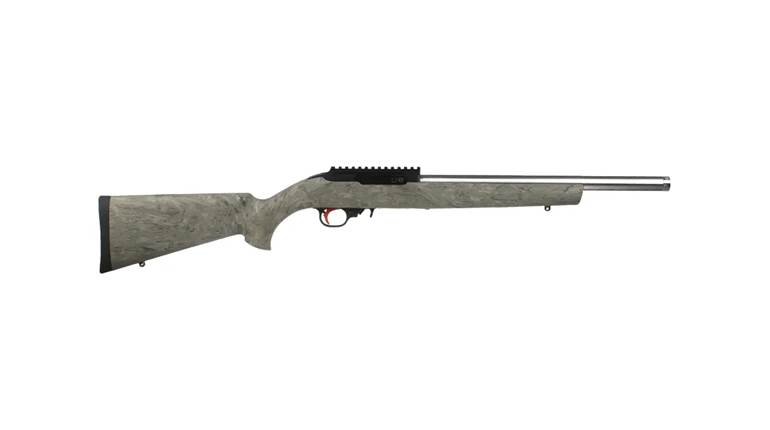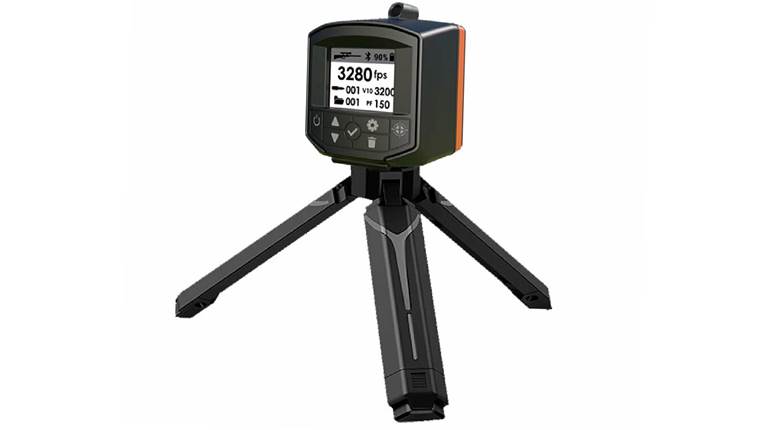
Recently, a reader said out loud what none of us wants to think about too much: There is no such thing as inexpensive shooting anymore. Ammunition of every variety has gone up in cost, even doubling and tripling the prices of just a few years ago. Reloading components are more expensive as well. As a result, spending quality time at the range with your favorite 1911 has become an expensive pastime.
An enjoyable and affordable solution is to switch to shooting .22 Long Rifle. Some manufacturers are building .22 pistols that replicate the controls of the 1911, but let's be honest, it’s not quite the same as shooting the pistol you love. If you like the idea of keeping the same trigger and controls to which you are accustomed, while reducing your ammo costs by about 88 percent per shot, then it's time to take a look at investing in a .22 Long Rifle conversion kit.
Kimber's Rimfire Target Conversion Kit
At the heart of the Kimber conversion kit is a 5-inch, stainless-steel, match-grade barrel, fitted with a stainless match-grade bushing. The recoil assembly consists of an aluminum cylinder—to mesh with the bushing—a shortened stainless guide rod and recoil spring. These components work together to provide the feel and function of a full-length guide rod. The slide is aluminum with front and rear cocking serrations. It's machined to look the same as other standard-size Kimber slides, but it does not lock open when the last shot is fired. The metallic target sights are matte black with a smooth-faced front sight blade and an adjustable serrated rear sight. The Kimber slides are available in either a matte black or satin silver finish.
Marvel Precision's Unit 2 .22 Long Rifle Conversion
Marvel Precision provides two distinct choices of conversion kits for shooting .22 rounds from a .45 frame. The Unit 1 model features a slide-long integrated sight rail with the option of adding a compensator to the barrel.
The Marvel Unit 2 (tested) conversion kit includes matte black adjustable target sights, with a smooth-faced front blade and a serrated, adjustable rear sight. The matte black Tri-Cut 7075 aluminum slide is milled to produce a striking profile, including scallops along the top of the slide. The Unit 2 features a blued, bushing-less bull barrel and a full-length steel guide rod. One interesting feature of this slide is a hardened-steel breech insert, which creates a steel-to-steel contact surface between the slide and the barrel. Like the Kimber, the Marvel slide does not lock open on the final shot.
The Marvel conversion requires a specific set of ammunition to function properly, which is carefully noted on the first page of the owner’s manual. Federal ammunition is not recommended. Instead, the list includes three approved loads: CCI Mini-Mag, Remington Thunderbolt and Remington Cyclone.
At the Range
The discussion of the range results has to be handled a little differently for this review. Most of the points I would usually make about the operation of the whole gun are irrelevant, since .22 conversion slides can be mounted on a variety of frames. In other words, overall results may vary depending on the frame you choose. So the results noted here will focus on the performance of the kits.
The Kimber Rimfire Conversion Kit is simple to install. After removing the .45 ACP magazine, slide stop and slide assembly, the .22 conversion slide assembly is placed on the frame and the factory slide stop is reinstalled. With the polymer .22 magazine loaded into the grip frame, the pistol is ready to shoot. The Kimber kit doesn't list any specific ammunition restrictions. However, since the Marvel unit prefers a specified, high-quality diet, I thought it was only fair to compare apples to apples during the formal tests of the Kimber by sticking to the good stuff.
The best single five-shot group for the Kimber was 1.25 inches, produced using Winchester Super-X 40-grain, copper-plated hollow points. All of the Super X groups stayed tight to also yield the best group average at 1.83 inches. CCI Stinger 32-grain, copper-plated hollow points came in second with an average of 2.00 inches, and the CCI Mini Mag 36-grain, copper-plated hollow points came in third with an average of 2.10 inches. With the formal testing completed, I went ahead and ran a few varieties of bulk ammo through the Kimber kit. As would be expected, the accuracy was not as good with the cheaper ammunition, but all of the rounds tested performed well and ran without any malfunctions.
The Marvel Unit 2 is also simple to install, but it requires an extra step or two. After the 1911 frame is stripped of the magazine, factory slide stop and slide assembly, the Unit 2 slide is set into the pistol frame. The factory slide stop is replaced by a Marvel slide stop specifically designed to work with the Unit 2. Once the Marvel slide stop is installed, the slide is moved out of battery just enough to expose the hex-head tip of the recoil rod. Using the provided take-down tool, the recoil rod is tightened to clamp the rod to the slide stop. This locks the barrel to the frame to keep it from moving while shooting. Load the metallic .22 magazine with the recommended ammunition, and you are ready to go.
I then proceeded to execute the gun writer's flub-up of the day. Even though it wasn't listed as one of the ammunition recommendations for the Unit 2, the Winchester Super X performed so well from the Kimber conversion that I just had to give it a try in the Marvel. As a result, I had the opportunity to experience firsthand exactly what the owner’s manual warned of when using non-recommended rounds, "Some of the symptoms that may occur are: failure to feed, stovepipes, misfires and light strikes." Therefore, I'm certainly not going to ding either Winchester or Marvel when all of the appropriate parties involved were duly notified ahead of time.
I swapped out the Wincher Super X for the CCI Mini-Mag, which is on the approved ammunition list. With the Mini-Mag work completed, I then moved on to two more CCI loads I had on hand. All three of the CCI test loads ran without any problems. The best single five-shot group from the Unit 2 was 1.50 inches, produced using CCI Mini-Mag 36-grain, copper-plated hollow points. The average group size for the Mini-Mag was 1.75 inches. The next best group average was 2.00 inches, produced using CCI Stingers 32-grain, copper-plated hollow points, followed by CCI Velocitor 40-grain, copper-plated hollow points at 2.25 inches.
Conclusion
To save money, many think we have to sacrifice features, functions or just plain settle for less. But, it's also true that not all conversion kits are created equal. So it was a pleasure to discover that both the Kimber Rimfire Conversion and Marvel Precision Unit 2 kits performed reliably and accurately. These affordable conversions will also expand the roles your 1911 can fill to include plinking, small game hunting and training new shooters. But before you buy, be sure to contact the manufacturers to verify that your 1911 frame is compatible.
Manufacturer: Kimber kimberamerica.com
Model: Rimfire Target Conversion Kit
Caliber: .22 Long Rifle
Slide: Aluminum
Slide Finish: Matte Black or Silver
Sights: Adjustable Target
Barrel Length: 5.00”
Overall Length: 8.70”
Magazine: Polymer, 10 Rounds
Twist: 1:16” RH
Rifle Grooves: 6
1911 Frame Required: Most Mil-Spec Single-Stack 1911 Pistol Frames
Suggested Retail Price: $330.00
Manufacturer: Marvel Precision marvelprecision.com
Model: Unit 2 Conversion Kit
Caliber: .22 Long Rifle
Slide: Aluminum
Slide Finish: Matte Black
Sights: Adjustable Target
Barrel Length: 4.80”
Overall Length: 8.70”
Magazine: Metallic, 10 Rounds
Twist: 1:16” LH
Rifle Grooves: 6
1911 Frame Required: Fits 1911 Government or Commander Single-Stack Frames
Accessories: Marvel Slide Stop, Take-Down Tool
Suggested Retail Price: $325.00




































